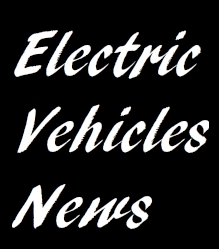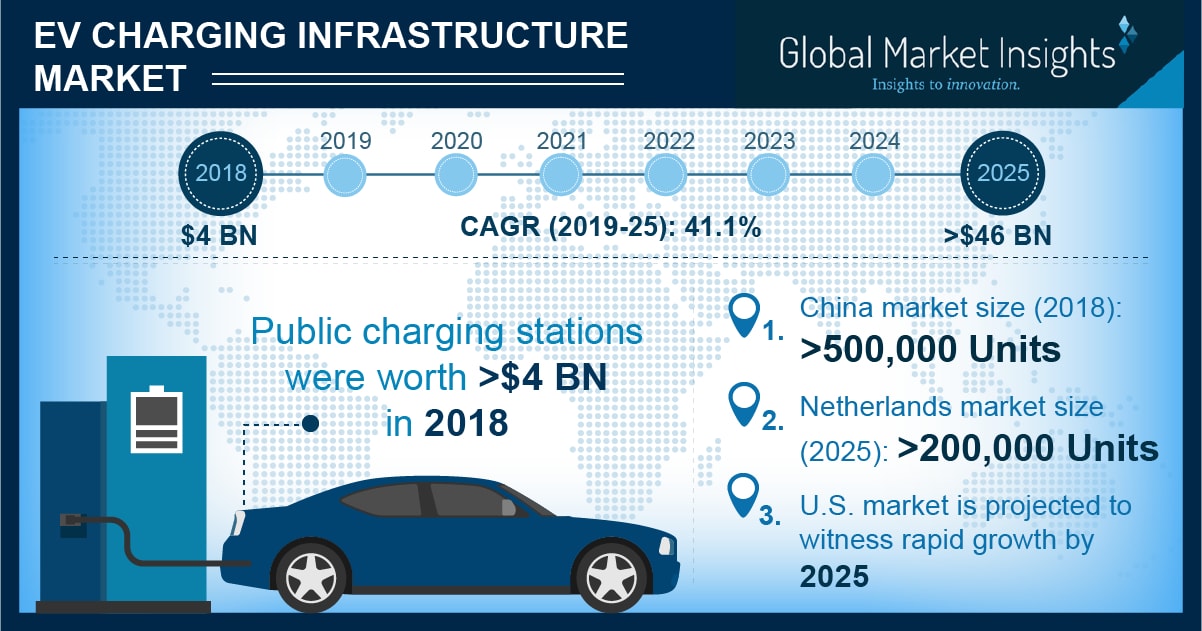Stringent emission targets to fuel EV charging infrastructure development
|
Global EV charging infrastructure market size is projected to reach
over US$46 billion by 2025. An electric can be fueled from renewable
sources of energy such as wind, solar and hydro. Development of
advanced EV charging infrastructure has encouraged leading
automobile companies to develop electric vehicle models, including
Ford, GM, BMW, Hyundai and many others.
Rise in CO2 emission levels from various sectors of the economy is
propelling the adoption of energy-efficient and sustainable
alternatives, including electric passenger and commercial fleet. The
government and certain internationally recognized organizations are
adopting strict regulations to control environmental degradation,
stimulating the establishment of efficient EV charging
infrastructure worldwide.
Reportedly, a passenger vehicle emits close to 4.6 metric tons of
carbon dioxide every year and the number is expected to grow owing
to increasing production of vehicles globally. In 2018, more than
1.53 million passenger cars were manufactured in the U.K. alone,
contributing over
£82 billion towards the economy.
Constant R&D in the automotive industry to meet the changing
consumer demands along with the need to adhere to government
regulations will add impetus to global
EV charging infrastructure market
share. To control carbon emission from vehicles in Europe, the
EU commission had set a target
of 130 grams of CO2
emission per kilometer
of new passenger vehicles in 2015 and from 2021, the average
emission target is to be reduced to 95g CO2/km.
Favorable initiatives by the U.S. government
Increasing adoption of electric vehicles across the U.S. is
supplementing the market dynamics over the years. In 2016, there
were
160,000 new EV registrations
in the region and the number has grown over the years due to the
high rate of affordability.
In a bid to encourage the sale of electric vehicles, the U.S.
government is offering fiscal benefits such as tax exemptions,
rebates and tax credits. California provides rebates to light-duty
zero emission automobiles. Additionally, low-income families can
avail an extra USD 2000 rebate on the purchase of an electric
vehicle.
The U.S. government has also made efforts to increase the
penetration of electric charging stations in the region to
facilitate smooth functioning of the vehicles. As of 2017, close to
47,130 charging stations
were installed across the region. The U.S. General Services
Administration has installed EV charging points for federal
employees and certain authorized users.
Source :
https://www.gminsights.com/industry-analysis/ev-charging-infrastructure-market |

